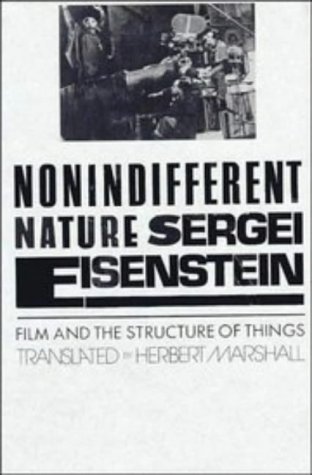Kristin Romberg: Aleksei Gan’s Constructivism, 1917-1928 (2010)
Filed under thesis | Tags: · architecture, art, art history, art theory, cinema, constructivism, film, theory
“This is the first monograph about the Russian constructivist Aleksei Gan (1887-1942) and an experiment in the formal analysis of a materialist practice.
Best known as co-founder of the First Working Group of Constructivists and author of the group’s agitational and theoretical texts, Gan’s own oeuvre was comprised of amateur performances and mass-media objects (texts, books, journals, and films). This dissertation shows that the same qualities of ephemerality and dependency that make Gan’s work resistant to art-historical analysis were also what made it representative of constructivism’s ambitions for a materialist approach to art. In exploring these forms, Gan redefined the ‘work of art’ as a labor process through which the material world, human beings, and normative (common or social) frameworks simultaneously produced one another. The result was an alternative modernism, what I call an aesthetics of embeddedness, whose objects were extensive and responsive structures designed to permeate and shape their environment. Through close readings, the dissertation redefines art-historical concepts such as style and medium in ways specific to Gan’s historical moment, also examining them as manifestations of tensions in the early Soviet imagination. Most crucially these involve the cult of labor, the politics of group formation, and the power of the mass media to mold the normative frameworks governing social reality.
Chapter 1 reevaluates the origins of Russian constructivism by examining Gan’s early career in cultural and political enlightenment organizations, particularly his work in amateur theater and as a ‘constructor of mass action’. Chapter 2 focuses on the crystallization of constructivism as a movement and aesthetic theory in 1921. Chapter 3 looks closely at Gan’s book Constructivism (1922), developing an understanding of constructivism based on a typographic rather than sculptural model of material making. Chapters 4 and 5 examine Gan’s journal projects in terms of architecture and cinema, defining a set of constructive paradigms that run throughout Gan’s work. Finally, chapter 6 treats Gan’s work as a filmmaker in relation to contemporary efforts to rationalize artistic labor.” (Abstract)
Ph.D. Dissertation
Columbia University, New York, 2010
576 pages
PDF (24 MB, illustrations missing, updated on 2017-3-21)
Comment (0)Konstantin Akinsha: The Second Life of Soviet Photomontage, 1935-1980s (2012)
Filed under book | Tags: · art, art history, avant-garde, cinema, constructivism, film, ideology, montage, photography, photomontage, politics, propaganda, russia, socialist realism, soviet union
“This dissertation explores the development of Soviet photomontage from the second half of the 1930s to the end of the 1970s. Until now, the transformation of the modernist medium and its incorporation into the everyday practice of Soviet visual propaganda during and after the Second World War has not attracted much scholarly attention. The firm association of photomontage with the Russian avant-garde in general, and with Constructivism in particular, has led art historians to disregard the fact that the medium was practised in the USSR until the final days of the Soviet system. The conservative government organisations in control of propaganda preserved satirical photomontage in its post-Dadaist phase and Heartfield-like form, finding it useful in the production of negative propaganda.”
Doctor of Philosophy Dissertation
University of Edinburgh, 2012
328 pages + 368 pages of illustrations
PDF (29 MB)
Comment (0)Sergei Eisenstein: Nonindifferent Nature (1987)
Filed under book | Tags: · aesthetics, architecture, art, cinema, film, literature, painting, theory

“This is the first publication in English of Eisenstein‘s major theoretical work from the last decade of his life. Almost completed but unrevised at the time of his death in 1948, it comprises three articles from 1939-41 rewritten for the book, together with a substantial text from the period 1945-47. More than a treatise of film theory (though its immediate impetus is clearly the films that Eisenstein worked on at this time, Alexander Nevsky and Ivan the Terrible Parts I and II), Nonindifferent Nature aspires to the status of a contribution to general aesthetics, and its numerous examples are drawn more from the other arts than from cinema. Indeed, apart from analysing, in retrospect, his own work, Eisenstein scarcely touches on film at all. Instead he deals with the novel (Zola, Tolstoy, Wilkie Collins), painting (El Greco, Chinese landscapes), architecture (Chartres Cathedral, Mayan temples), etching (Piranesi), opera (Wagner), poetry (Pushkin), acting (Frederick Lemaitre), music (Bach, jazz), even cartooning (Saul Steinberg).” (from a review by Russell Campbell)
Translated by Herbert Marshall
Publisher Cambridge University Press, 1987
ISBN 0521324157, 9780521324151
xxv+428 pages
via jchill, land
Reviews: Ronald R. Levaco (Los Angeles Times, 1987), Russell Campbell (New Zealand Slavonic Journal, 1991).
PDF (Introduction missing, 7 MB, no OCR)
Comment (0)
